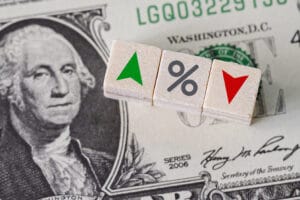Falling gas prices gave Americans a slight break from the pain of high inflation last month, though the surge in overall prices slowed only modestly from the four-decade high it reached in June.
Consumer prices jumped 8.5 percent in July compared with a year earlier, the government said Wednesday, down from a 9.1 percent year-over-year jump in June. On a monthly basis, prices were unchanged from June to July, the smallest such rise more than two years.
Still, prices are spiking across a wide range of goods and services, leaving most Americans worse off. Average paychecks are rising faster than they have in decades – but not fast enough to keep up with accelerating costs for such items as food, rent, autos and medical services.
President Joe Biden has pointed to declining gas prices as a sign that his policies – including large releases of oil from the nation’s strategic reserve – are helping lessen the higher costs that have strained Americans’ finances, particularly for lower-income Americans and Black and Hispanic households.
Yet Republicans are stressing the persistence of high inflation as a top issue in the midterm congressional elections, with polls showing that elevated prices have driven Biden’s approval ratings down sharply.
Federal Reserve Chair Jerome Powell has said the Fed needs to see a series of declining monthly core inflation readings before it would considering pausing its interest rate increases. Though the Fed more closely tracks a different inflation measure, it also monitors the figures in Wednesday’s report, known as the consumer price index.
The Fed has raised its benchmark short-term rate at its past four rate-setting meetings, including a three-quarter point hike in both June and July – the first increases that large since 1994. A blockbuster jobs report for July that the government issued Friday – with 528,000 jobs added, rising wages and an unemployment rate that matched a half-century low of 3.5 percent – solidified expectations that the Fed will announce yet another three-quarter-point hike when it next meets in September.
Financial markets are betting that the Fed will raise rates several more times this year, to a range of 3.5 percent to 3.75 percent, but will ultimately have to cut rates by next summer because traders expect the higher rates to cause a recession.
A survey by the Federal Reserve Bank of New York, released Monday, showed that Americans now expect lower inflation in the next few years than they did a month ago. Yung-Yu Ma, chief investment strategist at BMO Wealth Management, said lower inflation expectations may allow the Fed to react less aggressively to reports, such as last month’s burst of hiring, that suggest the economy is still strong and that inflation could remain high.
“It’s a modestly good sign,” Ma said of the inflation expectations data. “It gives them a little bit of room to not take a more aggressive approach.”







